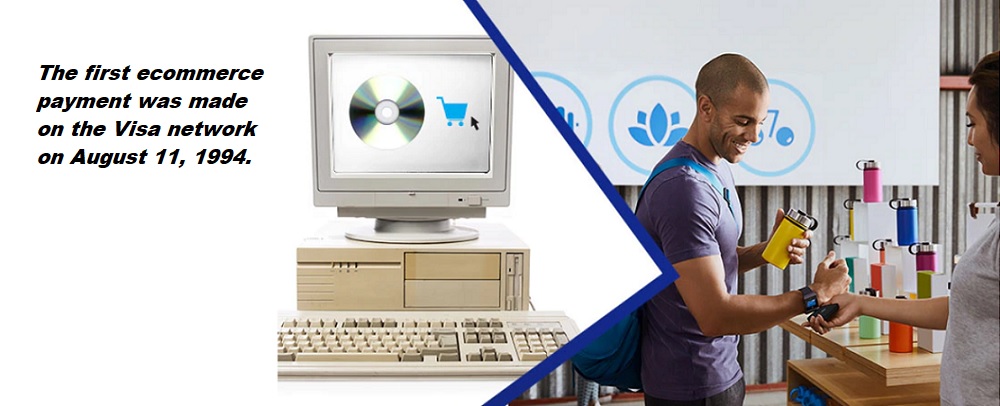Visa celebrates 25 years of ecommerce

25 years ago, shopping malls reigned supreme, Neiman Marcus introduced the ‘gift card’1, and Pizza Hut started accepting online orders for the first time. Shoppers did not have the luxury of buying anything they wanted from the comfort of their sofas, and long lines and fragmented payment technology made for frustrating checkout experiences. As the Internet ushered in the age of ecommerce, the advancement of secure digital payments brought to life the potential of a now multi-billion-dollar industry.
The ecommerce ecosystem has drastically evolved since the first online purchase was made on the Visa network on August 11, 1994. In 2018 alone, global e-retail sales amounted to 2.8 trillion U.S. dollars, and projections show a growth of up to 4.8 trillion total U.S. dollars by 2021.
As companies like Amazon and eBay ushered in a new generation of digital-first marketplaces, Visa introduced digital payment solutions like Visa Checkout, as well as security advances with 3D Secure and Visa Token Service, all of which have paved the way for the future of digital payments.
As Visa celebrate 25 years of ecommerce, the company is looking at what is on the horizon:
Visa Secure Remote Commerce (Visa SRC): Built on new EMV®3 standards for Secure Remote Commerce (SRC), Visa SRC provides the technical groundwork for the digital commerce ecosystem of tomorrow and creates convenient and consistent payment experiences. Visa SRC supports tokenization, which removes sensitive data from the transaction and routes new device information through the transaction flow. Using tokens protects both merchants and consumers and also increases rates of authorized payments. To build on EMVCo standards and Visa SRC, Visa is working to make digital checkout more friction-free and secure, which can help increase the potential for merchant sales conversion.
Internet of Things: From connected cars and connected devices to voice-enabled and wearable technologies, Visa continues to partner with device manufacturers to offer integrated payments for wearables that blend function and style. Payments will continue to be available in a range of clothes, accessories, devices—and even cars—that enable you to communicate, plan and pay without having to reach for your wallet or phone.
Biometrics: The transition to fingerprint and eye scanning technology promises to simplify customer experiences. Security analysts point out that as more applications enter the market, fingerprint-scanning technologies will improve, and even more biometric methods will become prevalent.
Dariusz Mazurkiewicz – CEO at BLIK Polish Payment Standard
Banking 4.0 – „how was the experience for you”
„To be honest I think that Sinaia, your conference, is much better then Davos.”
Many more interesting quotes in the video below:









